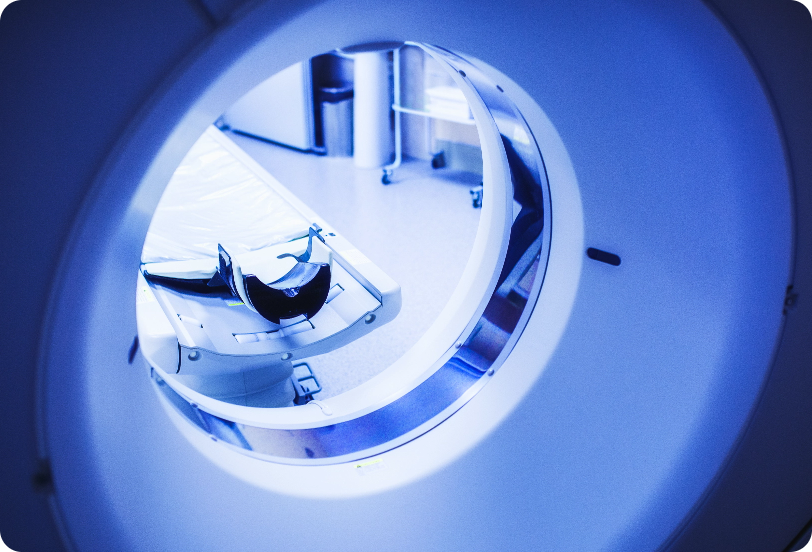Benefits
Why are the guidelines needed?
A useful investigation is one in which the result – positive or negative – will inform clinical management and/or add confidence to the clinician’s diagnosis. A significant number of radiological investigations do not fulfil these aims and may add unnecessarily to patient irradiation.
To avoid the wasteful use of radiology, the important questions to be asked are as follows:
Every attempt should be made to obtain previous images and reports. Transfer of imaging and reports through electronic links will assist in this respect.
Undertaking investigations when results are unlikely to affect patient management or over-investigating because the anticipated positive finding is usually irrelevant—for example, degenerative spinal disease—or because a positive finding is unlikely. Some clinicians and patients tend to rely on investigations more than others for assurance.
Investigating too early—for example, before the disease could have progressed or resolved, or before the results could influence treatment. The need for investigation and treatment should be reviewed at a more appropriate time.
In complex cases, or where one is unfamiliar with a pathway, it may be helpful to discuss an investigation with a specialist in clinical radiology or nuclear medicine before it is requested.
Deficiencies here may lead to use of the wrong technique, or the report being poorly focused on the clinical problem.


A guideline is not a rigid constraint on clinical practice, but a concept of good practice against which the needs of the individual patient can be considered, so while there have to be good reasons for non-adherence, no set of recommendations will command universal support or be applicable in all circumstances, and you should discuss any problems with your radiologists.
The aim for all examinations should be to obtain maximum information with the minimum of radiation.
Costs of Investigations

Actual costs of various investigations have not been included for several reasons. Costs will vary significantly among providers, countries and regions; and depending upon techniques employed, consumables, equipment and staff. More importantly, the cost of an examination in isolation does not consider the diagnostic/therapeutic impact of the study; that is, the effect on other investigations or patient management.
Performing the best test first may obviate other unnecessary investigations, guide appropriate management, reduce hospital stay and help to avoid futile interventions, leading to better outcomes.
As a general guide, the following
are listed in order of descending cost: PET-CT, nuclear medicine, MRI, CT, US and plain films.
Communicating with the Radiology Service
Referral for an imaging examination or interventional radiology procedure is a request for a clinical opinion usually from a specialist in radiology or radionuclide radiology.


Requests should be completed accurately and legibly to avoid misinterpretation.

The referrer’s details and contact information must be included.

Reasons for the request should be clearly stated, and sufficient clinical details should be supplied to enable the imaging specialist to understand the particular diagnostic or clinical problems to be resolved by the radiological investigation or procedure.
In fact, the provision of adequate clinical information is a requirement of IR(ME)R1,2. Electronic requesting is becoming increasingly prevalent and helpful in this regard.
Although there are forums for discussion such as multidisciplinary team meetings (MDTMs) and increased communication via email, the radiology report remains the primary method of communication. It should answer clinical questions and highlight the importance of radiological findings. This is particularly the case given the widespread access to picture archiving and communication systems (PACS) and the increasing use of outsourcing, resulting in fewer in- person consultations.
The specialist reporting the imaging investigation must ensure that the report is communicated in a timely fashion consistent with the degree of urgency. Any such discussions should be documented.
Referrers have a duty of care to confirm that results are followed up. Both the referrer and the reporter need to have a ‘safety net’ system in place so that results are not overlooked. This is often an integral component of electronic requesting and reporting systems. Patients should be informed as to how and when they will receive the results of their test.
Communication is vital to guarantee a patient-centred high-quality service. An important function of the clinical radiologist is to assist in patient investigation and management pathways to improve patient care. In some cases, the best investigation for resolving the problem may be an alternative procedure. If there is doubt as to whether an investigation is required or which investigation is preferable, an appropriate radiological specialist should be consulted. Regular clinico-radiological meetings especially in the multidisciplinary team (MDT) setting provide a useful format for such discussion and are considered good practice.

Justifying and Optimising the Radiation Dose
The use of ionising radiation in healthcare is an essential tool for the diagnosis, monitoring and treatment of disease and conditions. Diagnostic exposures involving ionising radiation are the major source of man-made radiation and account for 16 percent of the total population dose in the UK7. The volume and complexity of procedures and the range of examinations now available, involving the use of ionising radiation, continues to increase8. Technological advances in both equipment and the management of the large amounts of data, support the ever-growing demand on healthcare systems.
The risk of cancer following low doses of ionising radiation from diagnostic imaging, nuclear medicine (NM) and interventional radiology remain low. However, there is no dose, no matter how low, at which the risk can be completely discounted. With the increase in the applications and numbers of procedures performed, robust radiation protection processes are essential to keep doses as low as reasonably practicable.

Two of the recommendations and principles of radiation protection from the International Commission on Radiological Protection (ICRP) are justification and optimization9. When justification and optimisation are applied effectively the radiation dose to the individual will be as low as possible in order to answer the clinical question.
Justification is the intellectual process of weighing up the expected benefit of an exposure against the possible detriment of the associated radiation dose. Ensuring the appropriate examination is performed to answer to the question asked, is an essential means of avoiding unnecessary radiation dose. When justifying individual exposures there are a number of points that must be considered, for example, the age of the individual, the pregnancy or breastfeeding status and whether there are more appropriate imaging modalities, such as ultrasound or MRI, which do not involve ionising radiation.
Exposures to carers and comforters, those relatives or friends willingly supporting patients through an examination involving ionising radiation, must also be justified.
The aim of optimisation is to achieve the image quality required to satisfy the clinical question, or to inform treatment, using the lowest dose possible. An essential tool in the optimisation process are diagnostic reference levels (DRLs). DRLs are radiation dose levels for typical diagnostic and interventional examinations on standard size adults and children for broadly defined types of equipment. Information on the establishment and use of DRLs is available 10.
Optimisation is not limited to dose reduction alone but requires an understanding of image quality, equipment parameters and efficient working practices. A multidisciplinary team approach should be adopted when optimising exposures11. Ideally the process of optimisation should involve an Image Optimisation Team (IOT) 12 consisting of medical physics experts, radiographers, radiologists etc. The optimisation of equipment, processes and the radiation dose delivered, ensure individual exposures are As Low As Reasonably Practicable (ALARP). Optimisation should be carried out on a regular basis and when practice changes or when equipment is updated.
The Ionising Radiation (Medical Exposure) Regulations (IR(ME)R 2017 (Great Britain) 2018 (Northern Ireland)) 1,2 place legal responsibility on organisations to ensure that all individual medical exposures involving ionising radiation are justified and optimised and that the people involved in making those exposures are appropriately trained. IR(ME)R places responsibilities on employers around, for example, equipment quality assurance and clarified the role and responsibilities of the MPE, particularly with their involvement in optimisation and requires employers to provide a framework to ensure safe practice.
Generally, effective dose (ED) gives a broad indication of the detriment to health from any exposure to ionising radiation. Effective dose is defined as the sum of tissue equivalent doses, each multiplied by the appropriate tissue weighting factor, to indicate the combination of different doses to several different tissues. ED can be calculated using different factors as updated effective dose methodologies are introduced over time so estimates may not always be directly comparable 13.
Typical effective doses for some common diagnostic, nuclear medicine, hybrid and interventional procedures are shown in Table 2.
Table 2. Typical effective doses for common procedures14,15
| Diagnostic and interventional procedures | Typical effective dose (mSv) | Approximate equivalent period of exposure to background radiation* |
|---|---|---|
| Limbs and joints X-ray (except hips) | <0.01 | < 2 days |
| Chest X-ray (posteroanterior) | 0.015 | 2 days |
| Lumbar spine X-ray | 0.6 | 3 months |
| CT head | 1.8 | 8 months |
| Coronary angiogram | 3.9 | 1.4 years |
| CT pulmonary angiogram | 9.7 | 3.6 years |
| CT abdomen & pelvis | 13 | 4.8 years |
| CT chest abdomen pelvis | 19 | 7 years |
| Radionuclide studies | ||
| GFR (Tc-99m) | 0.05 | 7 days |
| Bone (Tc-99m) | 3 | 1.1 years |
| Cardiac SPECT (Tc-99m) | 6.4 | 2.4 years |
| Whole body PET-CT (F-18-FDG) | 18 | 6.7 years |
* Calculations based on UK average from all sources = 2.7 millisieverts (mSv) per year: regional averages 1.5-7.5 mSv per year [16]
 Bookmarks
Bookmarks